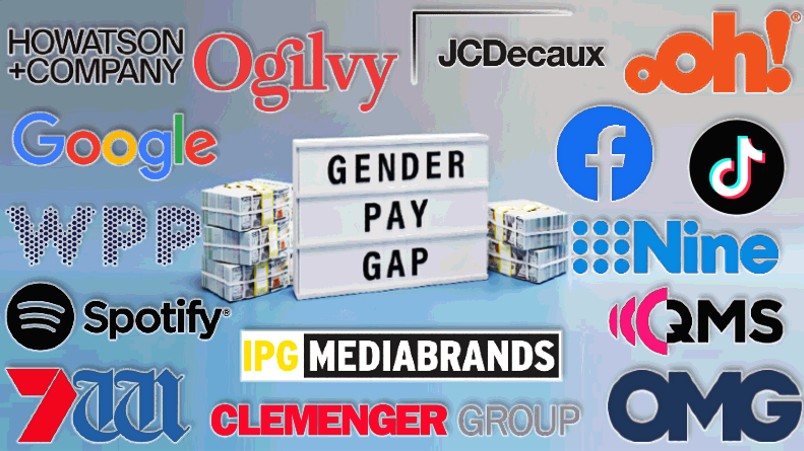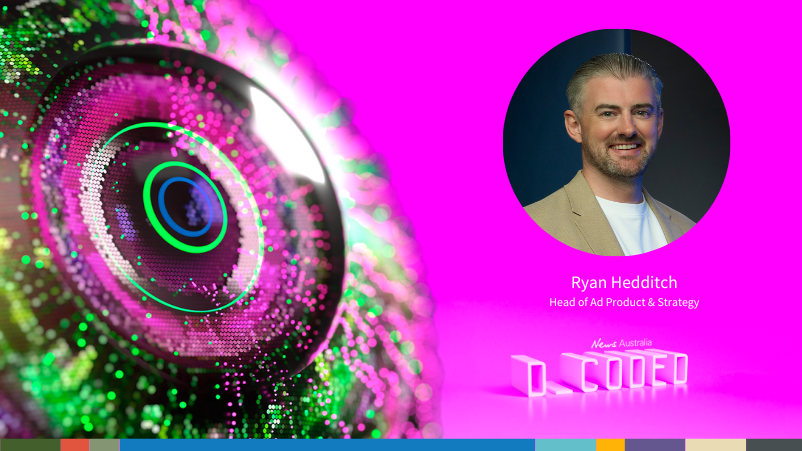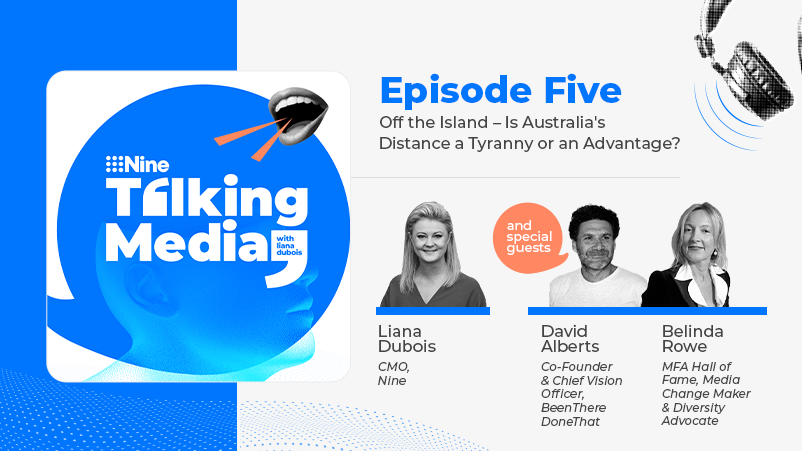Mind the gap: Agencies, holdcos, indies lag badly on gender pay gap through major disparity; media and tech less skewed; OOH sector flips as outlier

The Workplace Gender Equality Agency (WGEA) has revealed the gender pay gaps of 5,000 of Australia’s biggest private sector employers, and it's not looking good for the media and tech contingent – and even worse for agencies with some big groups, and indies, well out of balance. Few companies managed to squeeze within the WGEA’s recommended +/- 5 per cent pay gap range, but the vast majority of agencies are sitting above the national media base salary gender pay gap WGEA quotes of 14.5 per cent. This put most agencies in the 50 per cent of Australian companies with a pay gap of greater than 9.1 per cent, per the government data. Meanwhile in media, the out-of-home sector is the outlier, with most key players recording pay distribution that counteracted national averages – favouring female talent over men.
What you need to know:
- Despite plenty of DE&I talk, agencies on average have double-digit gender gaps when it comes to base pay, according to latest government data.
- While the Workplace Gender Equality Agency (WGEA) figures provide only a surface-level look at gender equality in the workforce – using median-based tallies fails to account for efforts to recruit women into underrepresented roles, where pay will increase over time with experience – it makes poor reading for many.
- Per the WGEA findings, most agencies reported a figure higher than the 14.5 per cent base salary median WGEA reports. At the far end of the spectrum, gaps ranged upwards of 25 per cent.
- IPG Mediabrands, Omnicom Media Group and Clemenger Group were exceptions with no base salary disparity or no more than 1 per cent.
- Howatson+Company and WPP's Advertising and Creative group were among those with highest disparity according to WGEA.
- WPP group (19.2 per cent), and WPP’s media arm, GroupM (14.7 per cent) are also well above median.
- Other groups with double-digit disparity include: Havas Australia (18.9 per cent), Dentsu (18.2 per cent), MediaMonks (15.3 per cent), WPP AUNZ (19.2 per cent), GroupM (14.7 per cent), Publicis (13 per cent) and DDB Group (12 per cent).
- The gap is only slightly narrower in media and tech.
- Within media, out of home is the outlier, with a negative gap almost across the piste: QMS (-20.9 per cent), oOh!Media (-9.9 per cent) and JCDecaux (-1.8 per cent) each reported a negative gender pay gap favouring women, while Val Morgan had a gender pay gap of 0.
- Nine Entertainment found to have a 13.4 per cent gender pay gap, Seven West Media at 10.8 per cent, ARN at 10.2 per cent.
- Spotify (23.5 per cent) and Domain (22.9 per cent) reported the highest median base salary gender pay gaps, while Streem (17.2 per cent) and TikTok (15.3 per cent) were also well above the national median.
- In Australia, Google found to have a 3.7 per cent gender pay gap, Facebook negative with -1.7 per cent.
The Workplace Gender Equality Agency (WGEA) has published gender pay gap data for nearly 5,000 Australian private sector employers, showing adland to be lagging when it comes to closing the gap.
The median pay gap reported by the industry’s agency cohort was, on average, higher than that reported by media and tech counterparts, with most agencies reporting a figure higher than the 14.5 per cent base salary median WGEA reports. At the far end of the spectrum, pay gaps ranged upwards of 25 per cent.
The individual business figures, made public for the first time, reflect the gap in median base salary between women and men at private sector businesses with more than 100 employees, with CEO remuneration excluded from the data set in 2024. It is widely understood these figures provide only a surface-level look at gender equality in the workforce, and, by virtue of using median-based tallies, fail to account for efforts to recruit women into underrepresented roles – where pay will grow overtime to reflect experience.
Despite this, lacklustre performance of business in the agency and consultancy space still came as a surprise to many, given the industry’s emphasis on diversity, equity and inclusion (DE&I) in recent years. As it turns out, agencies were less consistent in their commitment to addressing the gender pay gap when compared to compared to the media and tech sectors.
We have introduced several enhancements to our parental leave policies, invested in female leadership development, and welcomed more female talent into senior management roles and through our graduate programs and internships. These initiatives – and many others – are supported by Clemenger Group’s DE&I Council, featuring representatives across from all of our companies.
Agencies: walk vs. talk
Few agencies managed to fall within the target +/- 5 per cent gender pay gap range, which WGEA CEO Mary Woolridge explains accounts for “normal business fluctuations and employee movements”, but still reflects an employer’s actions to address gender equality.
According to the WGEA data, at least 11 agencies did not have a formal gender pay gap policy, including Havas Australia, MediaMonks, Apparent, DDB Group, IPG Mediabrands and Omnicom. Though this was not entirely indicative of a company’s respective pay gap, IPG Mediabrands, Omnicom Media Group and Clemenger Group were major exceptions, reporting respective median base salary pay gaps of 0.0 per cent, 0.3 per cent, and 1 per cent.
Each of these companies recorded a composition of at least 50 per cent women at all levels of the workforce, including the top quartile. However, the correlation between a balanced gender composition and lower gender pay gap did not exist across all agencies.
IPG Mediabrands CEO Mark Coad attributed its result to a “tremendous” amount of work to advance the group’s gender equality in recent years.
“While we certainly acknowledge there is still more work to be done to continue to advance equality, our action plan and gender equality focus areas are focused on continuing to move the dial in the right direction when it comes to the Gender Pay Gap,” he said.
IPG Mediabrands’ has undertaken numerous actions to further its progress in the gender equality space including workforce analysis, support for primary carers and annual gender pay gap reviews. It's now touting plans to focus on outcomes for female talent through professional development, succession planning and representation targets in recruitment.
OMG AUNZ CEO Peter Horgan also reiterated the agency's commitment to equality, diversity and transparency, citing an “objective to achieve parity in salaries for our people regardless of gender”.
“We are proud to have achieved our current position and are committed to continuing to do the work to maintain and improve upon this,” he said.
Clemenger Group chief people officer Raj Tapper said the group had ambitions to further “narrow the gender pay gap” and “make Clemenger Group the best destination for bright and talented women to foster successful careers in our industry”.
“We have introduced several enhancements to our parental leave policies, invested in female leadership development, and welcomed more female talent into senior management roles and through our graduate programs and internships. These initiatives – and many others – are supported by Clemenger Group’s DE&I Council, featuring representatives across from all of our companies,” he said.
Rebalancing work ahead
At the other end of the spectrum, independent agency Howatson+Company and WPP’s Advertising and Creative group (VML, Ogilvy Australia, Ogilvy Health, Ogilvy BHD, WhiteGREY and Landor & Fitch) were amongst agencies with the highest gender pay gaps - 25.4 per cent and 23.1 per cent, respectively. For WPP, the gap reported by its Advertising and Creative agencies exceeded that of the broader holding company (19.2 per cent), and WPP’s media arm, GroupM (14.7 per cent).
Despite their results, it both Howatson+Company and WPP are looking to move the dial forward.
Howatson+Company group managing director Renee Hyde said the agency had been on a deliberate path to "rebalance a century of under-representation" of women in advertising, noting its gender pay gap "does not mean men are paid more than women".
"At Howatson+Company, men and women have 100 per cent pay parity, informed by role and experience banding within that role. This has been true since our origination," she said. "Our reported ‘gap’ of 25.4 per cent reflects a deliberate decision to actively promote and recruit women to achieve more pathways in under-represented roles, such as the creative department and technology [88 per cent of all promotions awarded to women], and specialist programs to return more women from maternity leave, with industry leading benefits such as super continuity and full time pay for part-time work. We employ more women [56 per cent] and have more women in executive roles [61 per cent], and since our inception have retained 91.2 per cent of females."
According to the WGEA, WPP has a gender pay gap policy in place and has indicated its intentions to take actions based on a payroll analysis.
WPP did not respond to Mi3’s request for comment in time for publication.
Other agencies reporting a median base salary pay gap above the 9.1 per cent national median included Havas Australia (18.9 per cent), Dentsu (18.2 per cent), MediaMonks (15.3 per cent), WPP AUNZ (19.2 per cent), GroupM (14.7 per cent), Publicis (13 per cent), DDB Group (12 per cent), Enero Group (9.6 per cent). M&C Saatchi landed exactly on the national median at 9.1 per cent.
In a statement sent by Publicis Groupe ANZ, CEO Michael Rebelo said that the group had "more work to do" to improve its pay gap, but reverted to the encouraging 2 per cent gap it achieved in terms of pay equity, according to equity analytics platform Syndio.
“This is giving us confidence that we are moving in the right direction. As part of our efforts, we’ve developed a Gender Equity strategy focused on better understanding and addressing the challenges we face to be a representative and progressive employer," he said.
But while the pay gap figures may not provide full transparency of the state of gender equity within businesses, the over-arching trends seen across most agencies have been met with disappointment from many corners of the industry.
“I think we were all a bit shocked,” said Trinity P3 general manager Lydia Feely of the response to figures on Tuesday morning. Though more time would be needed to “get under the skin” of the numbers and what might be driving such significant pay gaps, Feely was optimistic about the pressure WGEA figures would put on agencies to act.
“It’s a competitive talent pool out there, so if businesses aren’t already all over this, they will need to be straight away," she said.
OOH inverts gap
Media companies performed moderately better than agencies when it came to median base salary gender pay gaps. This was particularly true for the out-of-home sector (OOH) with reported gender pay gap figures reflecting the reverse of broader industry trends. Key OOH players QMS (-20.9 per cent), oOh!Media (-9.9 per cent) and JCDecaux (-1.8 per cent) each reported a negative gender pay gap favouring women, while Val Morgan had a gender pay gap of 0.
QMS Chief Operating Officer, Sara Lappage, put the results down to the business’ investment in DE&I.
“We have improved and evolved our pay equity analysis, educated our people on systemic gender bias through inclusion training, invested in customised leadership and coaching programs, and undertaken a review of our performance process to identify and mitigate any remaining bias,” she said.
OOh!Media has been vocal about its willingness to being a “visible champion for gender equality”, with CEO Cathy O’Connor underlining the business’ commitment to reflecting the diversity of the communities in which it operates. She pointed to oOh!’s sales force as one of drivers behind the pay gap result.
“We have strong female representation in this part of our business, and as someone who started and built their career in media sales, I understand there’s so much opportunity for women to grow and develop in this space. We have seen just how women are bringing in revenue and driving strong pay outcomes, and it is important for businesses to mentor and support this talent,” she said.
JCDecaux also affirmed its commitment to maintaining the positive trend, pointing to its work to narrow the pay equity gap in like-for-like roles between men and women.
“JCDecaux is committed to supporting women to reach their full potential and thrive in our business and will use the WGEA data to help understand where and why pay gaps exist to continue to improve our position,” said a spokesperson.
As per the WGEA data, each of these OOH players has also achieved a relatively high level of gender balance at the senior end of the workforce – a factor which may have influenced the pay gap trend.
Chief People Officer of Val Morgan’s parent company The Hoyts Group, Jodi Paton, said a 0 per cent gender pay gap was “just one step in a continuous journey towards creating an equitable workplace”.
“Our focus remains on fostering an environment where every individual, regardless of gender, feels empowered and valued,” she said.
We have improved and evolved our pay equity analysis, educated our people on systemic gender bias through inclusion training, invested in customised leadership and coaching programs, and undertaken a review of our performance process to identify and mitigate any remaining bias.
Media's mixed message
Across other traditional media players, the gender pay gap typically sat within the five to 14 per cent range. Nine Entertainment was at the higher end of this spectrum, with a 13.4 per cent gender pay gap, with Seven West Media (10.8 per cent) and radio business ARN (10.2 per cent) following.
News Corp (9.4 per cent) and Foxtel (8.4 per cent) were closer to the national median, as were Nova (9 per cent), Network 10 (7.5 per cent) and Southern Cross Austereo (5.6 per cent).
Digital media companies tended to have more variation in their gender pay gaps. Spotify (23.5 per cent) and Domain (22.9 per cent) reported the highest median base salary gender pay gaps of this group, while Streem (17.2 per cent) and TikTok (15.3 per cent) were also well above the national median.
Google and Meta’s Facebook were leading amongst digital players, perhaps thanks in part to the bulk of their male-dominated technical workforce being offshore. Both were within the target range, with Google achieving a 3.7 per cent gender pay gap and Facebook drop into the negative with -1.7 per cent.
Tech gaps vs. skewed workforce
While the gender split of the tech workforce tends to skew male, that didn’t seem to majorly impact the gender pay gap compared to the agency and media sectors.
Amazon’s (5.4 per cent) gender pay gap sat just above the threshold on a median base salary basis, while Microsoft had a gap of 6.4 per cent and Adobe reported a 10.2 per cent gender pay gap.
Software companies Oracle (20.2 per cent), Salesforce (16.9 per cent) and IBM (13.5 per cent), all reported women accounting for approximately 30 per cent of their workforces.



